Data Science: entry level books
Data Science - the science of data, which arose at the junction of several broad areas: programming, mathematics and machine learning. This is due to the high threshold of entry into the profession and the need to constantly get new knowledge.
Key skills for beginning professionals are:
These three categories are divided into books that Plarium Krasnodar specialists selected for readers with basic knowledge in Data Science.

Some people search for themselves in R, but the path of truth lies through Python. The following books are an excellent choice to learn.

Python Tricks: The Book
Dan Bader
A book about various tricks and goodies that help you become more productive and program better.
Here we are talking about the basic data types of the Python language and approaches to writing code - from OOP to work with dependencies. It is worth reading both for beginners and everyone who wants to refresh their memory with typical pythonic designs.

High Performance Python: Practical Performant Programming for Humans;
Micha Gorelick, Ian Ozsvald
The book describes the language internally. It contains explanations of the work of the interpreter and the mechanic of the code, the main types of data and how they interact with the memory. Also, this guide will help you understand how to effectively use the hidden features of Python.
Each Data Scientist is once faced with the need to present the result of their work. And as you know, there is no better way than high-quality visualization. This is where bizarre pie charts arise ...
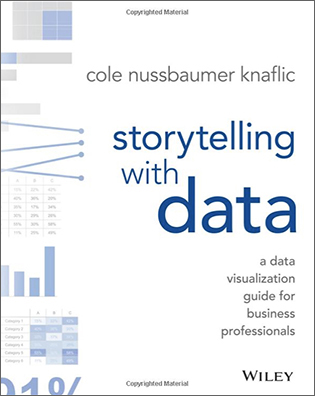
Storytelling with Data: A Data
Book for Business Professionals Cole Nussbaumer Knaflic A wonderful book on how to qualitatively visualize your results. In it, the ex-googler describes in detail all the steps involved in creating the correct graphs and gives counterexamples.
You can also visit the author's website, which collected a huge number of options for presenting data from the best specialists. Of course, step-by-step instructions for creating flawless work can not be found here - and where can you find it!

The Big Book of Dashboards.
Steve Wexler, Jeffrey Shaffer, Andy Cotgreave Visualizing Your Data Using Real-World Business
Data visualization is hard work, but when you know what an ideal should look like, you understand what you should strive for.
This is an excellent selection of dashboards for all occasions, in which solutions are recommended for almost any business problem. Unfortunately, there is nothing said about the implementation in Tableau - only visual components and an explanation of how best and why is better.
The same area where it is relatively easy to understand what the algorithms do, but it is very difficult to achieve mastery.
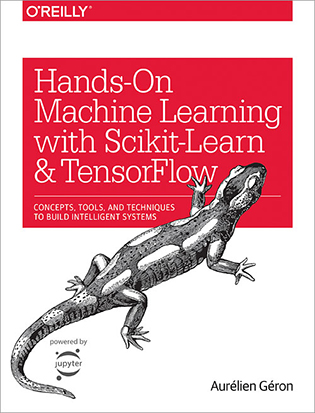
The On-Machine phone hands with the Learning Scikit-Less Learn and TensorFlow: Concepts, the Tools, and Techniques 'to the Build the Intelligent Systems'
Aurélien Géron
The book can be recommended to anyone who wants to understand how to build a model - from linear to tree. The first part of the available language outlines the principles of the algorithms. It will be especially useful to those who are just entering the profession. The second part is devoted to TensorFlow.

Deep learning. Immersion in the world of neural networks
S. Nikolenko, A. Kadurin, E. Arkhangelskaya
Almost all IT literature in the modern world is published in English, and the field of Data Science is no exception. There is even an expression: “I want to become a programmer, what language to learn? Learn to start English.
This is the only standing book on Deep Learning and Neural Networks, written by Russian authors in Russian. And it is very expressive, with a bunch of examples, various stories from science and references to sources (one list of references in this work is more useful than many publications). Trevor Hastie, Robert Tibshirani, Jerome Friedman
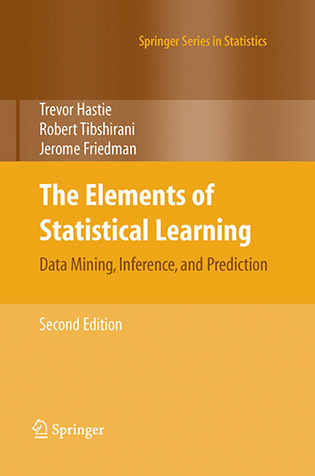
, The Second Edition of Statistical Learning: Data Mining, Inference, and Prediction, Second Edition
Just must-read in any collection on Data Science. A fundamental work on machine learning algorithms that can be used as a reference book. Requires some training, suitable for advanced level.
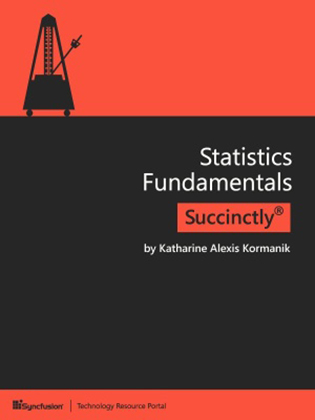
Statistics Fundamentals Succinctly
Katharine Alexis Kormanik
In the Succinctly series, pearls are often found, and this is one of them. At the beginning of the book are the basic definitions with pictures and comments, and the rest is devoted to the significance of the tests (T-and Z-tests).
The accessible language and the minimum of mathematics (the quantity necessary for understanding) make this manual an excellent introduction to statistics from a practical point of view.
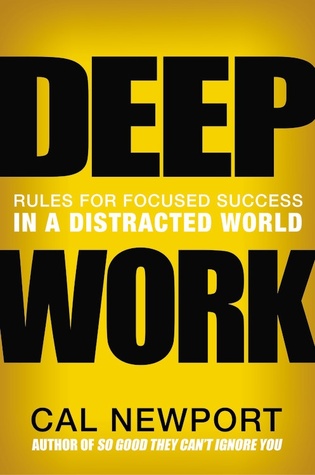
Distracted World
Cal Newport
The author tells about his experience and the experience of colleagues when working on a task with the utmost concentration. The book is quite easy to read and consists of a description of the approach itself, various examples and rules.
The basic idea is that the state of the brain allows you to reach the limit of performance and bring the results to a qualitatively new level. The limit of the brain, unfortunately, is limited, but we are training. We recommend reading to all.
Key skills for beginning professionals are:
- ability to write code (Python);
- ability to visualize your results;
- understanding of what is going on under the hood.
These three categories are divided into books that Plarium Krasnodar specialists selected for readers with basic knowledge in Data Science.

Python
Some people search for themselves in R, but the path of truth lies through Python. The following books are an excellent choice to learn.

Python Tricks: The Book
Dan Bader
A book about various tricks and goodies that help you become more productive and program better.
Here we are talking about the basic data types of the Python language and approaches to writing code - from OOP to work with dependencies. It is worth reading both for beginners and everyone who wants to refresh their memory with typical pythonic designs.

High Performance Python: Practical Performant Programming for Humans;
Micha Gorelick, Ian Ozsvald
The book describes the language internally. It contains explanations of the work of the interpreter and the mechanic of the code, the main types of data and how they interact with the memory. Also, this guide will help you understand how to effectively use the hidden features of Python.
Visualization
Each Data Scientist is once faced with the need to present the result of their work. And as you know, there is no better way than high-quality visualization. This is where bizarre pie charts arise ...

Storytelling with Data: A Data
Book for Business Professionals Cole Nussbaumer Knaflic A wonderful book on how to qualitatively visualize your results. In it, the ex-googler describes in detail all the steps involved in creating the correct graphs and gives counterexamples.
You can also visit the author's website, which collected a huge number of options for presenting data from the best specialists. Of course, step-by-step instructions for creating flawless work can not be found here - and where can you find it!

The Big Book of Dashboards.
Steve Wexler, Jeffrey Shaffer, Andy Cotgreave Visualizing Your Data Using Real-World Business
Data visualization is hard work, but when you know what an ideal should look like, you understand what you should strive for.
This is an excellent selection of dashboards for all occasions, in which solutions are recommended for almost any business problem. Unfortunately, there is nothing said about the implementation in Tableau - only visual components and an explanation of how best and why is better.
ML algorithms
The same area where it is relatively easy to understand what the algorithms do, but it is very difficult to achieve mastery.

The On-Machine phone hands with the Learning Scikit-Less Learn and TensorFlow: Concepts, the Tools, and Techniques 'to the Build the Intelligent Systems'
Aurélien Géron
The book can be recommended to anyone who wants to understand how to build a model - from linear to tree. The first part of the available language outlines the principles of the algorithms. It will be especially useful to those who are just entering the profession. The second part is devoted to TensorFlow.

Deep learning. Immersion in the world of neural networks
S. Nikolenko, A. Kadurin, E. Arkhangelskaya
Almost all IT literature in the modern world is published in English, and the field of Data Science is no exception. There is even an expression: “I want to become a programmer, what language to learn? Learn to start English.
This is the only standing book on Deep Learning and Neural Networks, written by Russian authors in Russian. And it is very expressive, with a bunch of examples, various stories from science and references to sources (one list of references in this work is more useful than many publications). Trevor Hastie, Robert Tibshirani, Jerome Friedman

, The Second Edition of Statistical Learning: Data Mining, Inference, and Prediction, Second Edition
Just must-read in any collection on Data Science. A fundamental work on machine learning algorithms that can be used as a reference book. Requires some training, suitable for advanced level.
Additionally

Statistics Fundamentals Succinctly
Katharine Alexis Kormanik
In the Succinctly series, pearls are often found, and this is one of them. At the beginning of the book are the basic definitions with pictures and comments, and the rest is devoted to the significance of the tests (T-and Z-tests).
The accessible language and the minimum of mathematics (the quantity necessary for understanding) make this manual an excellent introduction to statistics from a practical point of view.

Distracted World
Cal Newport
The author tells about his experience and the experience of colleagues when working on a task with the utmost concentration. The book is quite easy to read and consists of a description of the approach itself, various examples and rules.
The basic idea is that the state of the brain allows you to reach the limit of performance and bring the results to a qualitatively new level. The limit of the brain, unfortunately, is limited, but we are training. We recommend reading to all.
